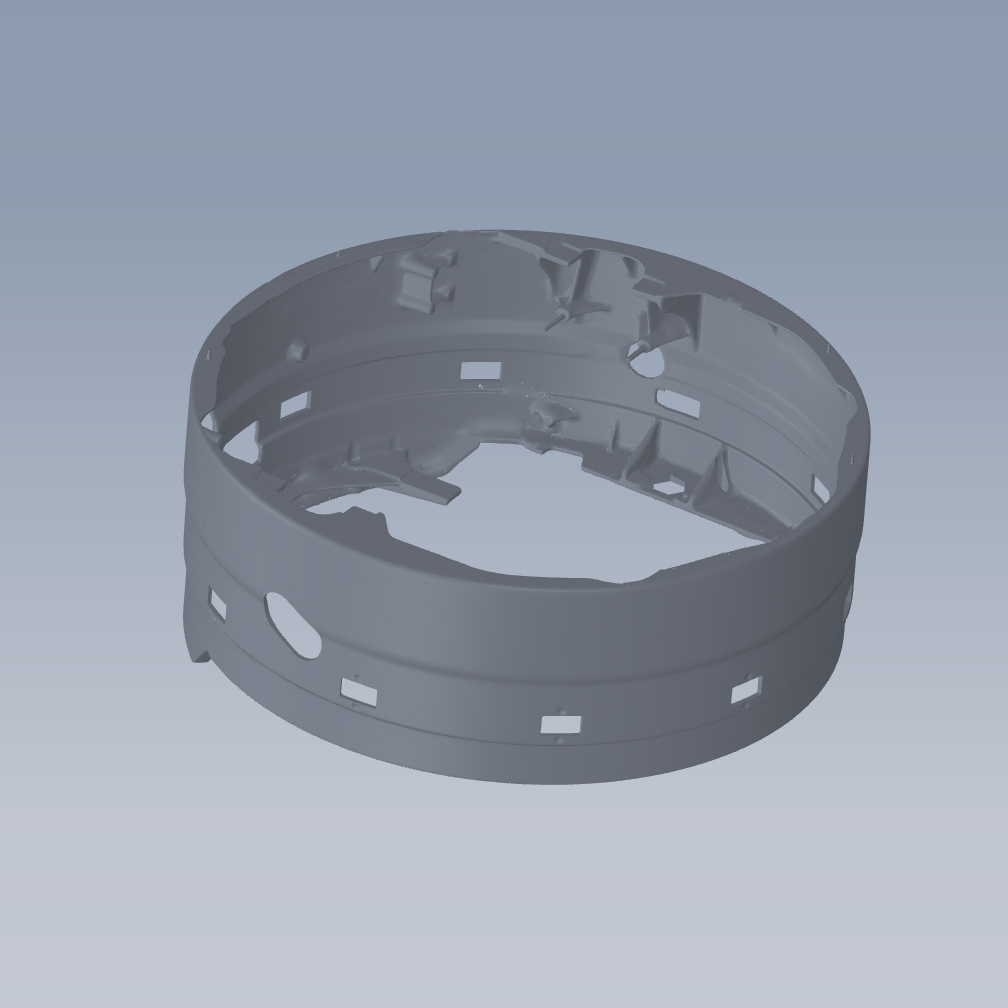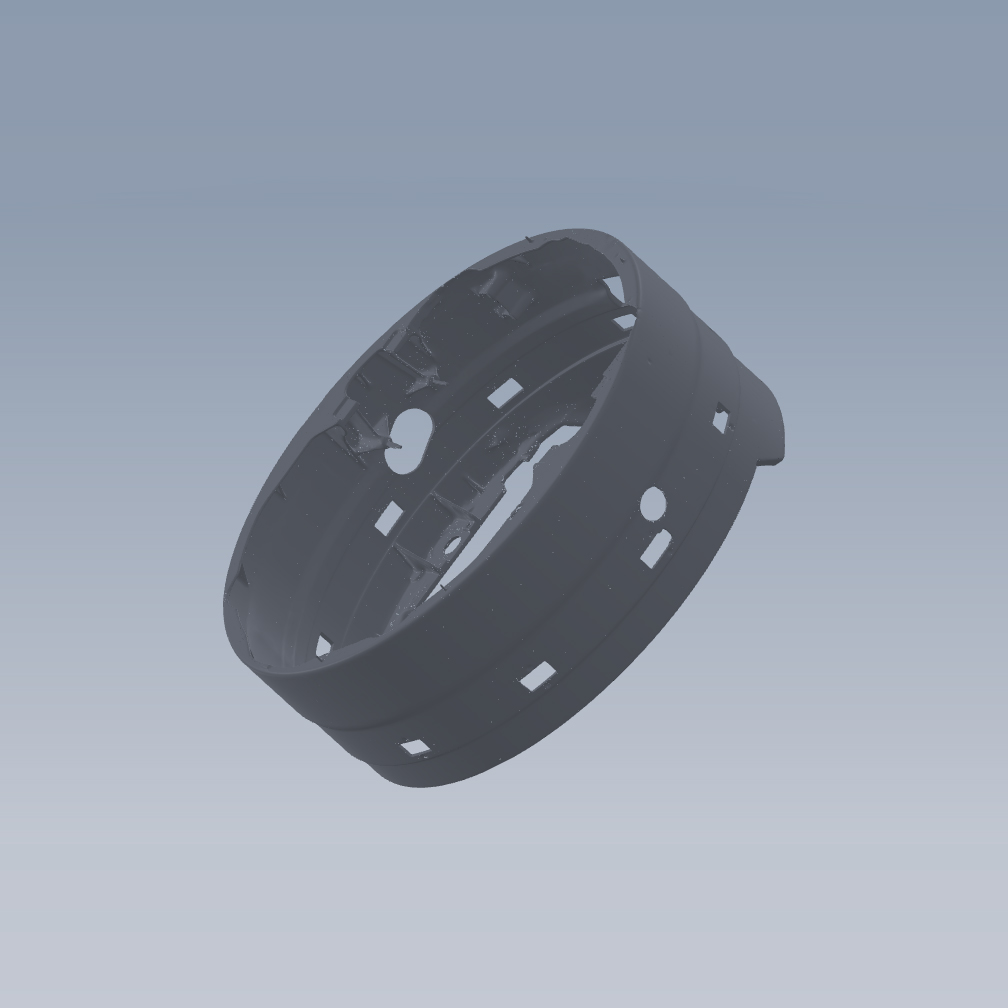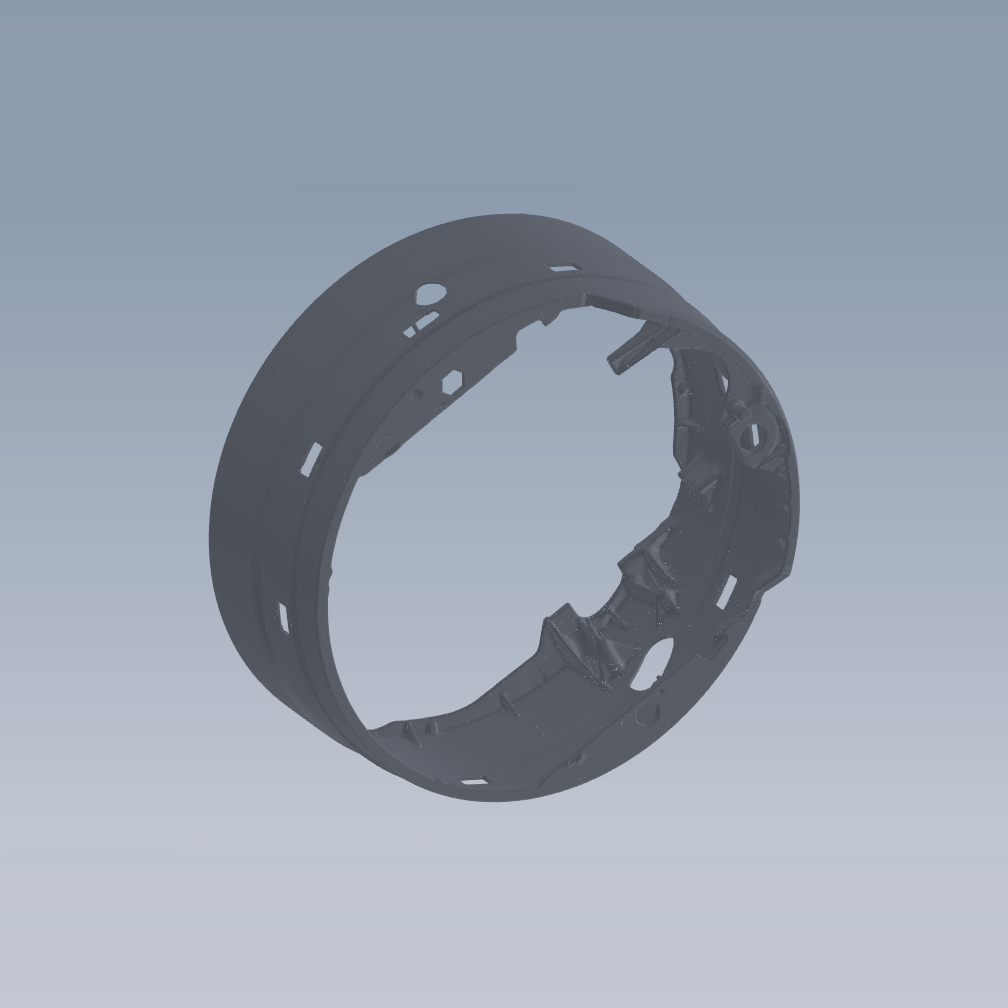Some big news regarding the upper turret for Lucky Thirteen.
You may recall that back in April we hired a 3D scanner to scan an original Type A-1 Top Turret tub assembly. The idea was, since it is unlikely that we will ever be able to locate and acquire an original tub, Hangar Thirteen will eventually have to cast one anew. And since we confirmed that the original blueprints no longer exist, new blueprints would have to be created based on original parts.
(This is going to be a bit complicated)
3D scanning does not work the way most people think. There is more to it than simply scanning a piece into the computer. Essentially, the computer creates a cloud of points based on what the laser sees, attempting to create a mesh by connecting said points. The more complete the mesh, the easier it is for the computer to understand the solid shape.
Now, because laser scanning is extremely expensive, we asked the scanner to wave his post-processing services to save on cost. (It would have cost us much, much more had we not done so – and since we are dependent on donations, we never have much to spend.)
The problem was that there were quite a few holes in the scan, mostly caused by shadows which the laser overlooked. While multiple scans of the same piece would have helped fix the issue, this is nevertheless common with 3D scanning. Ours was just a bit more hole-ridden than most. I will readily admit that not catching this during the scanning process was my mistake, one caused by my own unfamiliarity with the subject.
Thankfully, our volunteers went straight to work rectifying the issue. Bob Hachmann, Kevin Davenport, Dennis Dohogne, and Chris Erdahl all spent time working on the tub, cleaning up the scan. Dennis ultimately reached out to the Solidworks community, contacting nPower Software and their CTO Gary Crocker. nPower is one of a tiny few companies that produce a program designed for handling this issue: Power Surfacing.
To promote their Power Surfacing add-on for Solidworks, nPower cleaned the top turret scan, going so far as to create a video documenting the process. You can view it here:
Because of its technicality, it may be difficult to understand just how important this is. Let me put it this way: because of their help, we now have a solid computer model of the Sperry A-1 Tup Turret tub assembly. The tub assembly served as the turret’s housing, being the largest piece and holding all its various gears and motors (as well as the gunner himself). Having a solid model means that we now have a digital blueprint for this piece – the first blueprint in nearly 80 years. This is exactly the documentation needed by moldmakers and foundries to cast the part anew. And because it is digital, we can have the computer account for little details such as shrinkage in the casting process. Having a physical tub cast will certainly cost a great deal – far more than we have ever raised via donation before – but at least now we know it can be done.
And there is always more to go. We still have to 3D scan the top turret’s V-brace assembly (which mounts under the tub) as well as few of the smaller, mounting pieces. And we have also been recently given the opportunity to 3D scan an early ball turret ball assembly (more on that in a future update). These will all require fundraising – but the end result will certainly be worth it. I hope you are all as excited as we are!
In the meantime, a very special thanks to Dennis, Gary, and nPower Software for wrapping this up. If any of you work in CAD and maybe use Solidworks, we heartily encourage you to check out nPower and try out their products!
Keep the show on the road!




